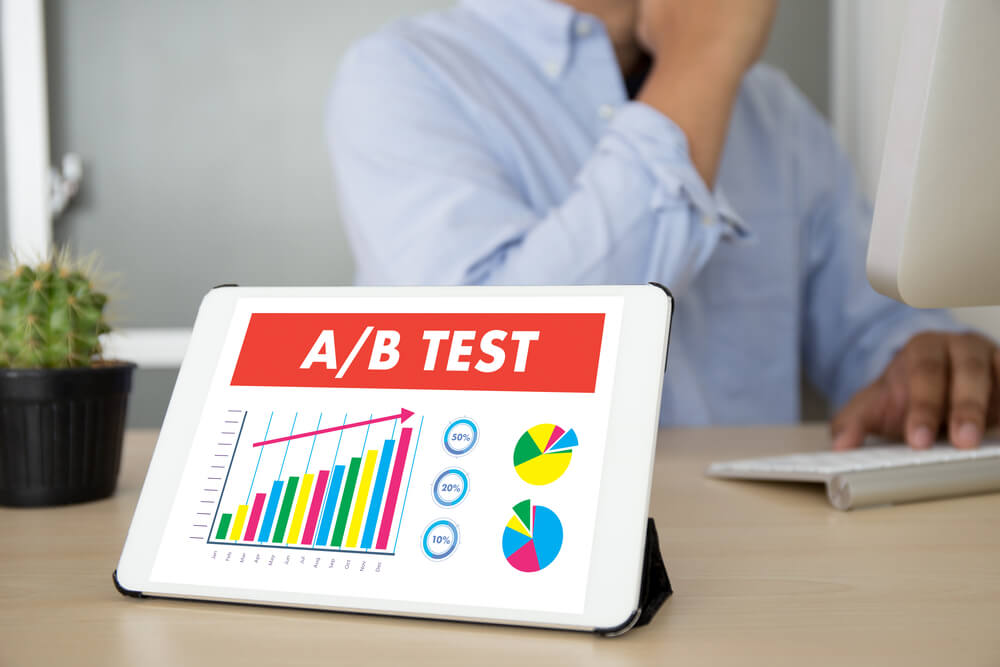
What Are the Types of Analytics? What Are Their Best Uses?
Companies use marketing analytics when they want to know whether their efforts are leading to the best possible results. Businesses can adjust their strategies, anticipate errors, and handle risks using analytics.
A San Diego analytics agency uses the following types of analytics:
 Diagnostic analytics goes beyond describing past events to understand why. It involves analyzing data to uncover the causes or factors influencing a particular outcome. Techniques used in diagnostic analytics include data drilling, data mining, and advanced statistical analysis techniques. These are the best uses of diagnostic analytics in marketing.
Diagnostic analytics goes beyond describing past events to understand why. It involves analyzing data to uncover the causes or factors influencing a particular outcome. Techniques used in diagnostic analytics include data drilling, data mining, and advanced statistical analysis techniques. These are the best uses of diagnostic analytics in marketing.
 Predictive analytics uses historical data and statistical models to predict future events. It includes analyzing patterns and trends in the data to make predictions about what is likely to happen. Predictive analytics utilizes regression analysis, data modeling, and machine learning algorithms to forecast future trends, customer behavior, demand patterns, or market dynamics.
Here are some key areas where predictive analytics works with marketing:
Predictive analytics uses historical data and statistical models to predict future events. It includes analyzing patterns and trends in the data to make predictions about what is likely to happen. Predictive analytics utilizes regression analysis, data modeling, and machine learning algorithms to forecast future trends, customer behavior, demand patterns, or market dynamics.
Here are some key areas where predictive analytics works with marketing:
 Prescriptive analytics furthers predictive analytics by recommending actions or decisions based on the predicted outcomes. It goes beyond expecting what happens and provides insights into what actions to take to achieve the desired results.
Several techniques make prescriptive analytics effective: optimization algorithms, simulation models, and decision analysis techniques. With this type of analytics, San Diego businesses make expert decisions by considering various constraints, scenarios, and trade-offs. Here are key areas where predictive analytics is helpful in marketing:
Prescriptive analytics furthers predictive analytics by recommending actions or decisions based on the predicted outcomes. It goes beyond expecting what happens and provides insights into what actions to take to achieve the desired results.
Several techniques make prescriptive analytics effective: optimization algorithms, simulation models, and decision analysis techniques. With this type of analytics, San Diego businesses make expert decisions by considering various constraints, scenarios, and trade-offs. Here are key areas where predictive analytics is helpful in marketing:
- Descriptive analytics
- Diagnostic analytics
- Predictive analytics
- Prescriptive analytics
Are you looking for a full-service digital marketing agency? See the DAP difference below!
Descriptive Analytics
Descriptive analytics summarizes and interprets historical data to gain insights into past events or trends. It is analyzing data to understand what happened and why it happened. Descriptive analytics uses data aggregation, visualization, and statistical analysis to depict past performance. Here are some of the best uses of descriptive analytics in marketing:- Help with customer segmentation: Identify and group customers by demographics, psychographics, and purchasing behavior to understand them and improve marketing strategies.
- Analyze campaign performance: Give insights into the effectiveness of marketing channels, messaging, and creative elements to develop strong strategies and optimize future campaigns.
- Enhance website and social media analytics: Tools such as Google Analytics can track site traffic, user behavior, and engagement, and marketers can use the data to determine which channels drive traffic, which pages perform well, and how visitors interact with their content.
- Optimize the customer journey: Map the customer journey by analyzing marketing channel touchpoints. Descriptive analytics helps marketers improve customer experience by revealing the customer’s conversion path.
- Analyze sales and revenue: Identify patterns and relationships between marketing efforts and business outcomes by examining sales data and trends to better understand which marketing activities drive sales and revenue.
- Improve competitive analysis: Examine market share, advertising spending, and other metrics to assess the company’s competitive position and identify areas for improvement.
- Analyze customer churn: Identify factors contributing to customer churn by analyzing historical data on customer behavior, purchase frequency, and customer satisfaction.
Diagnostic Analytics
 Diagnostic analytics goes beyond describing past events to understand why. It involves analyzing data to uncover the causes or factors influencing a particular outcome. Techniques used in diagnostic analytics include data drilling, data mining, and advanced statistical analysis techniques. These are the best uses of diagnostic analytics in marketing.
Diagnostic analytics goes beyond describing past events to understand why. It involves analyzing data to uncover the causes or factors influencing a particular outcome. Techniques used in diagnostic analytics include data drilling, data mining, and advanced statistical analysis techniques. These are the best uses of diagnostic analytics in marketing.
- Deeply analyze campaign performance: Use metrics and data to help marketers understand why marketing campaigns succeed or fail. For example, San Diego businesses can determine whether a campaign performed well as a result of the messaging, targeting, timing, or other factors.
- Perform A/B testing: Compare two or more versions of a marketing element (such as an email, landing page, or ad). By examining different variations, marketers can identify which elements or features drive the differences in performance.
- Assist with website and conversion funnel analysis: Identify site conversion funnel bottlenecks and improvement opportunities. By analyzing user behavior, click-through rates, and funnel conversion rates, marketers can identify problem areas.
- Improve customer feedback analysis: Analyze customer feedback, such as surveys, reviews, and social media comments. Through sentiment analysis and text mining, businesses can learn about customer opinions, satisfaction, and pain points.
- Perform competitive analysis: Marketers can learn more about competitors using diagnostic analytics. They examine competitor data, marketing strategies, and market dynamics to determine their competitors’ success or failure to help position, differentiate, and grow.
- Help with pricing and profitability analysis: Analyze pricing strategies and profitability for marketers. Pricing information, sales volume, and customer behavior all influence price elasticity.
Predictive Analytics
 Predictive analytics uses historical data and statistical models to predict future events. It includes analyzing patterns and trends in the data to make predictions about what is likely to happen. Predictive analytics utilizes regression analysis, data modeling, and machine learning algorithms to forecast future trends, customer behavior, demand patterns, or market dynamics.
Here are some key areas where predictive analytics works with marketing:
Predictive analytics uses historical data and statistical models to predict future events. It includes analyzing patterns and trends in the data to make predictions about what is likely to happen. Predictive analytics utilizes regression analysis, data modeling, and machine learning algorithms to forecast future trends, customer behavior, demand patterns, or market dynamics.
Here are some key areas where predictive analytics works with marketing:
- Assist with customer segmentation and targeting: Predictive models analyze historical data and customer attributes to identify patterns and characteristics that increase engagement or conversion.
- Enhance lead scoring and qualification: Assign scores or rankings to leads based on their likelihood of conversion to identify the characteristics and actions that indicate a strong chance of becoming a customer.
- Improve churn prediction and customer retention: Analyze customer behavior, purchase frequency, and engagement metrics to identify customers at risk of churning.
- Forecast sales: Forecast sales volumes and revenue to plan resources, set goals, and optimize sales and marketing strategies.
- Optimize marketing campaigns: Find the best channels, messages, and timing for marketing efforts. Marketers can leverage success patterns to allocate money, enhance targeting, and refine data-driven marketing campaign plans.
- Predict customer lifetime value: Estimate a customer’s lifetime value to determine their future value to the brand.
- Create product recommendations and personalization: Use customer data and behavioral patterns to enhance personalized product recommendations.
Prescriptive Analytics
 Prescriptive analytics furthers predictive analytics by recommending actions or decisions based on the predicted outcomes. It goes beyond expecting what happens and provides insights into what actions to take to achieve the desired results.
Several techniques make prescriptive analytics effective: optimization algorithms, simulation models, and decision analysis techniques. With this type of analytics, San Diego businesses make expert decisions by considering various constraints, scenarios, and trade-offs. Here are key areas where predictive analytics is helpful in marketing:
Prescriptive analytics furthers predictive analytics by recommending actions or decisions based on the predicted outcomes. It goes beyond expecting what happens and provides insights into what actions to take to achieve the desired results.
Several techniques make prescriptive analytics effective: optimization algorithms, simulation models, and decision analysis techniques. With this type of analytics, San Diego businesses make expert decisions by considering various constraints, scenarios, and trade-offs. Here are key areas where predictive analytics is helpful in marketing:
- Optimize marketing campaigns: Help marketers optimize campaigns by recommending the best combination of marketing channels, messaging, targeting criteria, and budget allocation.
- Enhance pricing and promotion efforts: Assist in optimizing pricing and promotional strategies by considering customer demand, competitor pricing, price elasticity, and profit margins.
- Improve the customer journey: Optimize the journey by identifying the most influential touchpoints, messages, and interactions for every stage by analyzing customer data, behavior patterns, and preferences.
- Allocate resources and budgeting: Help marketers optimize their budgets and resources across marketing initiatives and channels by considering impact, costs, and constraints.
- Develop an optimized product portfolio: Assist in optimizing a company’s portfolio by recommending the best mix of products or services based on customer preferences, market demand, and profitability.
- Boost customer retention and loyalty strategies: Help optimize customer retention and loyalty strategies by recommending personalized actions to increase customer engagement and reduce churn.
- Help optimize marketing investments: Assist marketers in optimizing their marketing investments by recommending the best allocation of resources across different marketing activities and initiatives.
Summing Up
These types of analytics are interconnected and build upon each other. They provide businesses with a comprehensive approach to analyzing data, gaining insights, and making informed decisions. Depending on their specific business goals and needs, organizations can use one or more types of analytics to extract value from their data and drive improvements in operations. Contact Digital Authority Partners to learn how marketing analytics can improve your business.Want To Meet Our Expert Team?
Book a meeting directly here



